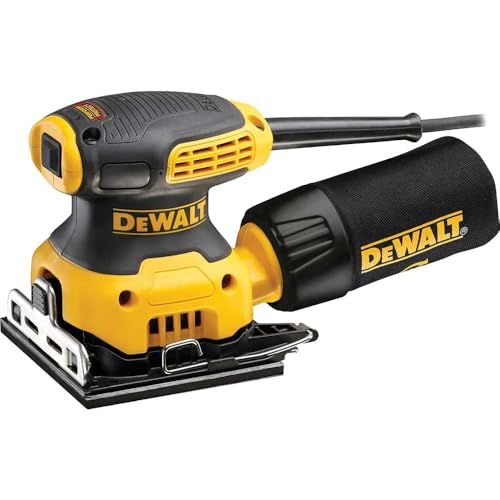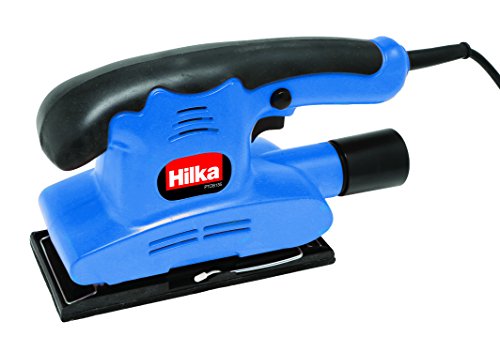Understanding Sheet Sanders: What They Are and How They Work
What is a Sheet Sander?
A sheet sander is a compact power tool used primarily for smoothing surfaces, especially wood, by using sheet sandpaper. Unlike larger sanders, sheet sanders are designed for detailed work and reaching into tight spaces. They operate by using a square pad that vibrates or moves in a circular motion, ensuring that the sandpaper effectively removes roughness, paint, or previous finishes without damaging the underlying material. This tool is an ideal choice for both DIY enthusiasts and professionals looking to achieve a fine finish.
How Do Sheet Sanders Function?
Sheet sanders typically require a sheet of sandpaper, which is secured tightly to the sanding pad. When the sander is turned on, the motor drives the pad in a rapid back-and-forth motion or in a circular pattern. This action allows the sandpaper to make contact with the surface being sanded, effectively abrading it and creating a smooth finish. They are often lightweight, making them easy to control for detailed work, such as sanding edges or intricate designs, which can be difficult with bulkier sanding tools.
Key Features to Look for When Buying a Sheet Sander
Power and Speed Control
When selecting a sheet sander, look for one that offers adjustable speed settings. This feature allows us to tailor the sanding speed to the specific task; slower speeds are best for delicate surfaces while faster speeds can quickly remove material from more robust woods. Additionally, consider the power of the motor. A tool with sufficient power will ensure a smooth operation without bogging down, enhancing our efficiency during projects.
Ergonomics and Weight
The design of the sander is crucial for comfort and control while using it. We should aim for a model that is lightweight yet sturdy, allowing for prolonged use without causing fatigue. A comfortable grip is equally important, as it gives us better control and precision during sanding. Some sanders also feature vibration-reduction technology, which helps to minimise hand fatigue and improve overall user experience.
Dust Collection System
An effective dust collection system is another key feature to consider. A good sheet sander should have an integrated dust bag or port that connects to a vacuum. This feature helps maintain a cleaner work environment while also preventing dust accumulation, which can obscure visibility during our sanding tasks and make clean-up more difficult.
Versatility and Accessories
Lastly, it’s beneficial to choose a sander that is compatible with multiple types of sandpaper. Different grits are appropriate for various stages of sanding, and a versatile sander allows us to easily switch between them. Some models may even come with a selection of sandpaper to get us started right away, providing added convenience when beginning our projects.
Top Recommended Sheet Sanders for Every Budget
Entry-Level Options
For those of us just starting out or on a tighter budget, consider the models that offer good performance without breaking the bank. Sheet sanders in this category typically provide a solid range of features including adjustable speed and a decent dust collection system. These sanders are perfect for lighter tasks and small projects around the home.
Mid-Range Sanding Solutions
If we have a bit more to invest, mid-range sanders will typically boast improved power, better ergonomics, and enhanced dust management systems. These units are suitable for more extensive woodworking projects and may come with additional features such as interchangeable sanding pads, making them a great choice for more regular use.
Professional Grade Sanders
For professionals or serious hobbyists, high-end sheet sanders deliver exceptional performance and durability. They feature powerful motors, advanced vibration control, and superior dust collection capabilities. These sanders are designed for heavy-duty use and provide us with the ability to tackle large projects with ease.
How to Use a Sheet Sander Effectively for Woodworking Projects
Preparation is Key
Before we start sanding, ensure our workpiece is clean and free of debris. Setting up our workspace properly can help improve efficiency and effectiveness. We should also select the appropriate sandpaper grit based on our project requirements—starting with a coarser grit and gradually moving to finer grits will yield the best results.
Sanding Techniques
When using the sander, we should maintain a steady, even pressure. Avoid pressing down too hard, as this can create uneven surfaces. Keeping the sander moving in straight lines or smooth circular motions will help us achieve a consistent finish across the entire area. It’s also helpful to sand in the direction of the wood grain whenever possible to minimise swirl marks.
Checking Our Progress
As we work, it’s important to regularly check our progress. This allows us to adjust our technique if necessary and make certain that we are achieving the desired finish. After completing the sanding with a fine grit, we should wipe down the surface to remove any dust before applying finishes or leaving the wood raw.
Maintaining Your Sheet Sander for Long-lasting Performance
Regular Cleaning
To keep our sheet sander in optimal condition, regular cleaning is essential. After each use, we should remove any dust that has accumulated in and around the sander. This not only extends the life of the tool but also ensures that it operates effectively. Furthermore, checking the sanding pad for wear and replacing it when necessary will prevent uneven sanding results.
Inspecting for Wear and Tear
Periodically, we should inspect the other components of the sander as well. Look for any signs of wear on the power cord and switches, as these can affect safety and performance. Addressing any issues early on will ensure our sander remains a reliable tool for our woodworking projects.
Proper Storage Practices
When not in use, store the sander in a dry, clean environment. Keeping it in a dedicated case or pouch can help protect it from damage as well as dust accumulation. Proper storage practices contribute significantly to the longevity of our tools, making our woodworking projects more enjoyable in the long run.





















